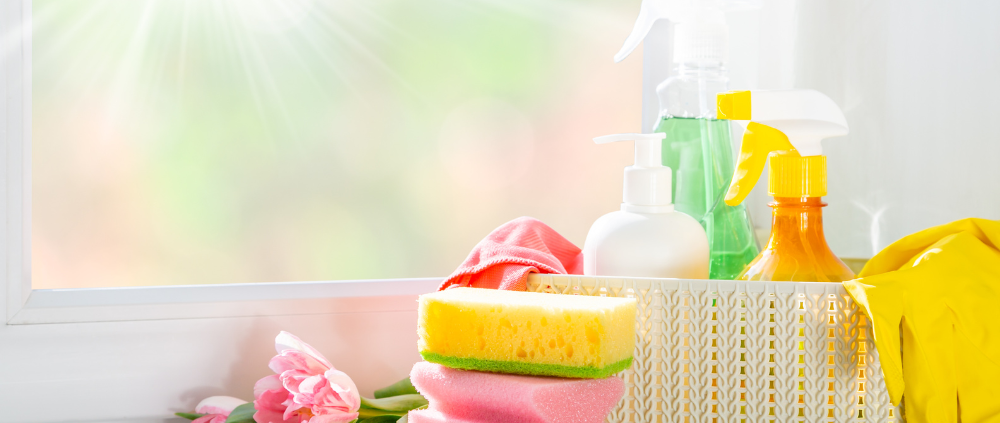Ergonomic Spring Cleaning
As the days get longer and the weather gets warmer, we feel energized and motivated to engage in spring cleaning, a ritual that has been taking place for hundreds, if not thousands, of years. Spring cleaning gives us an opportunity to breathe new life into our homes after the winter season.
Deep cleaning your home can be a daunting task, especially for those with chronic pain or limited mobility. The following tips for ergonomic cleaning can help you avoid pain and strain while getting the job done.
- Use Proper Tools: Invest in ergonomic cleaning tools that reduce the need for bending and stretching. Lightweight vacuum cleaners with adjustable handles and mops with long handles are great tools for reducing back strain. Consider using a scrub brush with long handles for cleaning your bathtubs and showers. You can even get a powered version which rotates on its own which helps you avoid having to tightly grip and exert pressure onto the cleaning tool to scrub away messes.
- Maintain Good Posture: Stand up straight while cleaning and avoid bending over excessively. Try to look ahead rather than looking down. Looking ahead can help in maintaining good posture and avoiding strain on the neck. Utilize a step stool by sitting on it when cleaning low areas rather than bending down to clean.
- Take Breaks and Stay Hydrated: Cleaning can be physically demanding, so take regular breaks to rest your muscles and prevent fatigue. Drink plenty of water while cleaning to stay hydrated and maintain energy levels.
- Alternate Tasks: Avoid doing repetitive motions for an extended period. Alternate between tasks to give different muscle groups a break.
- Use Proper Lifting Techniques: When lifting heavy objects like buckets or furniture, bend your knees and use your legs to lift, rather than your back. Keep the object close to your body and avoid twisting while lifting.
- Use Padding: Place padding under your knees or use knee pads when kneeling to clean low surfaces to reduce strain on your joints.
- Use Two Hands: When using cleaning tools like mops or brooms, use both hands to distribute the workload evenly and reduce strain on one side of your body. When dusting or wiping down surfaces, alternate between hands.
- Listen to Your Body: Pay attention to any discomfort or pain while cleaning. If something doesn’t feel right, stop and take a break or adjust your technique.



